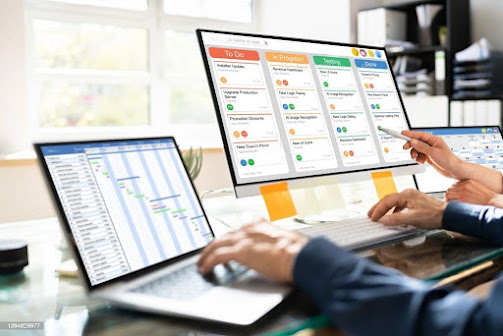Auditing Feature in Microsoft Project & Planner
In the realm of project management, precision and accountability are paramount. Every decision, every change, and every update can have a significant impact on the outcome of a project. This is where the auditing feature in Microsoft Project & Planner steps in, offering a comprehensive solution to track changes, ensure accountability, and maintain control throughout the project lifecycle.
Understanding Auditing: Auditing in Microsoft Project & Planner provides users with the ability to monitor and track every action taken within the project environment. From task revisions to team updates, this feature offers transparency and insight into the project's progression.
Benefits of Auditing:
1. Enhanced Accountability: With auditing, project managers can easily identify who made what changes and when. This level of transparency fosters accountability among team members, ensuring that everyone takes ownership of their contributions.
2. Track Changes: Auditing allows users to track modifications made to tasks, timelines, and resources. Whether it's a change in deadlines or adjustments to resource allocation, project managers can stay informed and make informed decisions accordingly.
3. Improved Decision-Making: By having access to a detailed history of changes, project managers can make better decisions regarding project direction, resource allocation, and risk management. This insight enables proactive problem-solving and minimizes the likelihood of errors or oversights.
4. Streamlined Communication: Auditing facilitates clear communication among team members by providing a centralized platform to review project activity. Instead of relying on scattered emails or messages, stakeholders can access a comprehensive record of project changes and updates in one place.
How to Utilize Auditing:
1. Enable Auditing: In Microsoft Project & Planner, users can enable auditing within the settings or preferences menu. Once activated, the system will begin recording all relevant project activities automatically.
2. Review Audit Logs: Project managers can access audit logs within the platform to review a chronological record of changes and updates. These logs provide detailed information, including the user responsible for each action and the timestamp of the modification.
3. Take Action: Armed with insights from the audit logs, project managers can take appropriate action to address any discrepancies, clarify misunderstandings, or resolve conflicts. This proactive approach ensures that projects stay on track and objectives are met efficiently.
Conclusion:
In the fast-paced world of project management, the auditing feature in Microsoft Project & Planner serves as a valuable tool for maintaining control, ensuring accountability, and driving success. By harnessing the power of auditing, project managers can navigate challenges with confidence, make informed decisions, and ultimately deliver exceptional results.
Embrace the efficiency of auditing and unlock new possibilities for your projects today with Microsoft Project & Planner.
Explore the auditing feature in Microsoft Project & Planner and elevate your project management experience to new heights.
______________________________________________
I aimed to highlight the significance of the auditing feature in Microsoft Project & Planner, emphasizing its role in enhancing accountability, facilitating better decision-making, and streamlining communication within project teams. Let me know if you need further revisions or additional information!
Reference: https://techcommunity.microsoft.com/t5/project-blog/auditing-capabilities-coming-to-microsoft-project-microsoft/ba-p/3841229




Comments
Post a Comment